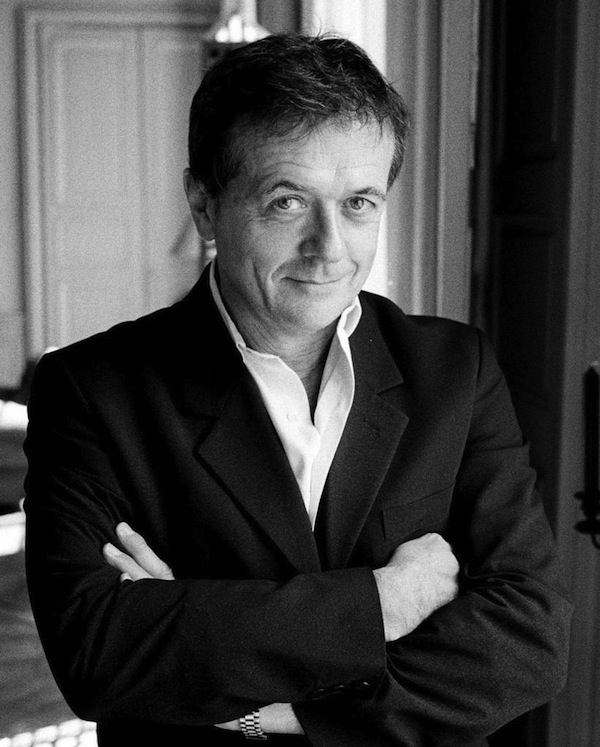
A giant passes: Patrice Chéreau (1944-2013)
By Sebastian Spreng, Visual Artist and Classical Music Writer
A catastrophe. That’s how Alex Ross described the untimely death of Patrice Chéreau. The critic’s description could not have been more accurate. A screen and stage actor, filmmaker, screenwriter, film producer and magisterial stage director. Chéreau was perhaps the last in a tradition that connects Jean Louis Barrault, Roger Planchon, Antoine Vitez, Giorgio Strehler, Peter Brook… At 68, he still was the most charming enfant-terrible, seasoned, irrepressible, workaholic. And names and places like Racine, Marivaux, Menotti, Chekhov, Genet, Bernard-Marie Cortès and Jon Fosse, Phèdre, Hamlet – winner of five Molières Awards – Nancy, Avignon, Spoleto, Aix-en-Provence, Théâtre National Populaire, Piccolo Teatro of Milan, Thèâtre Nanterre-Amandiers, L’homme blessé, Queen Margot, Intimacy, Gabrielle are only a few of the milestones in a career as stellar as exemplary modest. A recipient of France Legion d’honneur, he was one of the five greats to be honored next April with the Opera News Award. Patrice Chereau
Beyond the theater – and the film industry to which, by extension, he also contributed with works like Queen Margot, a “Caravaggio in motion” winner of the Jury Prize in Cannes – there was opera, which Chéreau served with spectacular rigor and devotion, as few or none have. Neither his first Rossini nor his Offenbach’s Tales of Hoffmann in Paris proved sufficient to establish his reputation. It was Wagner that did it, his absolute first, thanks to an unprecedented invitation he received in 1976 from the Bayreuth festival by way of his countryman Pierre Boulez. “Tell him I’m not interested in going to Lebanon,” was Chéreau’s candid initial reply. The secretary had confused, as often happens, Bayreuth with Beirut. The invitation was repeated and, thanks to Wolfgang Wagner’s insistence, the two Frenchmen touched off a huge and delicious scandal when, for the Wagner’s Ring centennial, they dared to revisited in the theater of the green hill a radical tetralogy that turned out to be paradigmatic. In that methaporic Ring cycle, Wagner’s world resembled ours too much, inspiring terror and, naturally, a virulent initial rejection.
The 1976 ruckus slowly abated from year to year, and by 1980 the production had become such an absolute classic that it was broadcast on television around the world. Never had so many people everywhere seen and heard the epic saga, many more than all who had between 1876 and 1979. It was then that both theater and opera audiences, Wagnerians and otherwise, discovered the previously unknown, overpowering theatricality of the Ring of the Nibelung, thanks to the rhythm and character interactions Chéreau imposed on it. A Wotan fashioned in the image and likeness of Wagner himself (and of Burt Lancaster’s Prince Fabrizio in Visconti’s masterpiece The Leopard), a goddess Fricka who was like Cosima (Wagner’s second wife) and at times Mathilde (Wagner’s love) or Minna (Wagner’s first wife), the industrial revolution, the Rhine contained by a dyke, the Zen austerity of the death announcement and the dragon becoming a defeated giant made of straw: these were only a few, among many, astounding, unforgettable innovations.
Then came another capolavoro, also crafted with the indomitable Boulez, it was the world premiere of the final version of Alban Berg’s Lulu, to which Chéreau applied his previous experience with the original play by Franz Wedekind and his love for Pabst’s Pandoras’s Box, then a memorable Wozzeck in which his early devotion to Fritz Lang and German expressionists blossomed, a remarkable Janáček (From the House of the Dead, the only work that crossed over to New York’s Metropolitan Opera), a fierce Don Giovanni and a Cosí fan tutte that was a genuine school for lovers. He never returned to Bayreuth, though they tried to tempt him with Tristan and Parsifal. (He refused the latter because, he said, “I didn’t know what to do with the work beyond its sublime music.”) But he did return to Wagner with a heartbreaking Tristan at La Scala, a complete success he shared with Daniel Barenboim and a cast to match.
This summer, as he battled cancer, Chéreau enjoyed a last, enormous and well-deserved success at Aix-en-Provence with a Spartan – or, rather, Mycenaean – Richard Strauss’s Elektra that was a resounding tribute to Greek theater and to the unfairly forgotten Adolphe Appia. It was a production that accentuated his justly legendary style: solid, architectural, vigorous and exquisite, one in which beauty joined with purpose, in which nothing was lacking, nothing was superfluous.
It should be remembered that Chéreau staged the Ring, his first Wagner, when he was 32, and that he did so in the then sacrosanct temple of Bayreuth with the help of his buddies Boulez and Richard Peduzzi, the outstanding set designer of all his operas. Without meaning to, he had repeated the feat that Wieland Wagner had accomplished in the 1950s, when he stripped his grandfather’s work of all connotations and distortions. If Wieland returned to the work’s ancient Greek roots, Patrice lent it just the right European flavor to make it as universal as the former’s. Through his grandson and the visitor from the other side of the Rhine, Wagner saw his dreamed-of Gesamtkunstwerk materialize. Paradoxically, both men died of lung cancer at ages (48 and 68, respectively) when they still had much more to offer. And that is an immense pity. For the art world, Chéreau’s death is a devastating loss. A catastrophe.
- PATRICE CHÉREAU (Lezigné, Nov. 2, 1944 – Paris, Oct. 7, 2013)
Recent Content
-
Artsarticle ·
-
Artsarticle ·
-
Artsarticle ·
